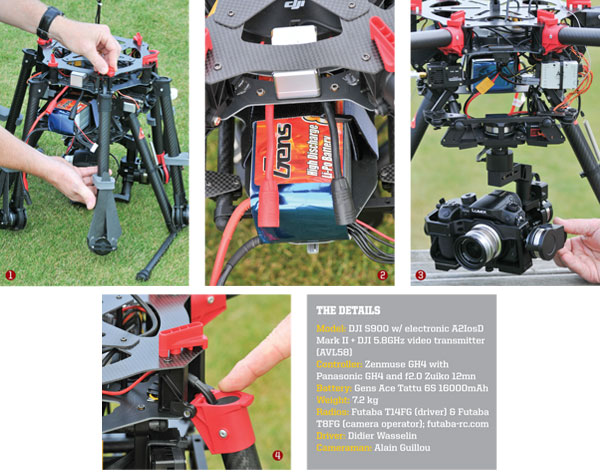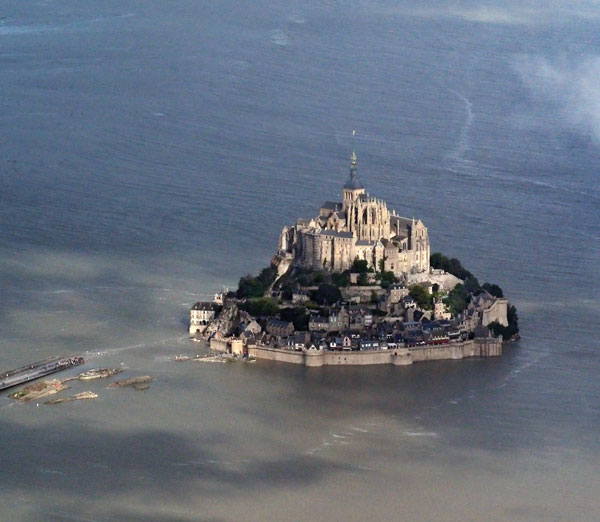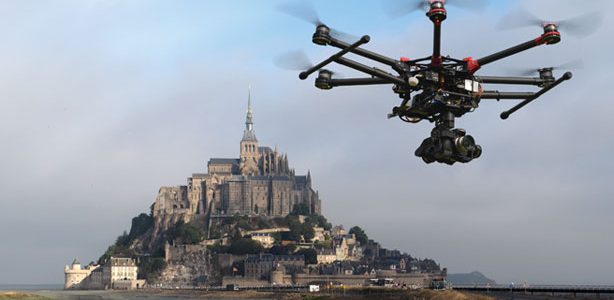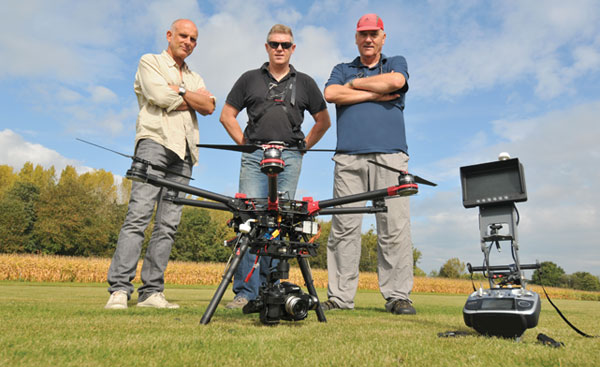Cutting edge-photography meets 8th century wonder. For renowned French photographer Alain Guillou, his art is an adventure. He has traversed the globe to capture images, and when he needed an aerial view, he has taken off in helicopters, ultralight aircraft, a hot-air balloon and even a motorized parasail.

The team thanks the DGAC (French Civil Aviation Board) for allowing them to fly the S900 into the R12 “forbidden zone.”
He notes, “I did aerial photography using all sorts of means of transportation, since 1972 when I was among the very first pioneers in Europe to fly hang gliders.” In the 1980s, he wanted to photograph seagulls in flight and installed a camera in a giant fiberglass radio-control glider. Unfortunately, adds Guillou, “That ended with the glider at the bottom of the sea due to radio frequency disturbance created by a radio amateur using his radio in his car.” Guillou’s latest aerial shoot, however, found him with both feet planted firmly on the ground, as his Panasonic camera was taken aloft by a DJI S900 multirotor. Guillou says, “For me, drones are most welcome, although you cannot use them to cover all the photographic fields.” After crashing his first multirotor, Guillou met Didier Wasselin. “Didier helped me to repair it using his very significant expertise in drone techniques. I am very thankful to him,” says Guillou.
When Guillou wanted to take aerial photos of one of France’s most famous landmarks and a World Hertiage Site, Mont Saint-Michel on the Normandy coast, he teamed up with Wasselin. Built in the eighth century AD, this island monastery attracts more than three million visitors every year, so Wasselin had to get many permits, including special authorization from the government and local and municipal law enforcement for their multirotor flight over the dam and the bridge leading to Mont-Saint Michel. Guillou especially appreciated being able to get close to the subject with a wide-angle lens and adds, “But for small telephoto lens shooting, I hope the brushless gimbal will allow in the near future the possibility to zoom in on the subject while in flight.”
After the successful shoot at Mont-Saint Michel, Guillou says that he is planning additional shoots using multirotors: “They are a very logical way to discover new subjects from a unique point of view.
I dream to find a sponsor for a road trip with a camping car to launch a photographic drone over the most beautiful European places.”
Guillou adds that he also appreciates the eco-friendly nature of multirotors, and he wants to thank DJI Innovations for helping to stop climate change: “Thousands of images captured by multirotors worldwide will save tons of precious fuel as we aren’t shooting aerial images from helicopters!”

1. The arms of the DJI S900 fold down for easy transport.
2. Tattu Gens Ace provided literal power and also sponsored this historic flight.
3. The Zenmuse gimbal maneuvers the Panasonic GH4 camera in flight.
4. This mechanism securely locks each arm in place for flight.
FLYING OVER MONT-SAINT MICHEL
The weather is on our side, the sun arrives, the wind is not too strong (10- 15 knots), and security is in place—one on each side of the road to block any cars. We get into position on the road and perform the first takeoff. For this flight, I stayed with Gens Ace 6S 16000mAh 15C battery, so we don’t burden the machine. What a pleasure to drive a machine with this stability, especially with two radios. Separate control of the S900 and the camera provides both comfort and safety, but constant communication between the pilot and the cameraman is essential. After a 16-minute flight, we are back on the road. We are getting closer to Mont Saint-Michel, positioning us to the foot of the ramparts with the help of the municipal police, which ensures the safety ground vis-à-vis the tourists. And we can start several flights, west and east walls, for panoramic video.

Organizer Alain Guillou thanks sponsors DJI Innovation and Tattu Gens Ace batteries as well as pilot Didier Wasselin, photographers Denis Legall, Pascal Stelletta, and Danièle and Jean Pierre Husson.
By Team RotorDrone as told by Alain Guillou & Dider Wasselin Photos by Alain Guillou

Didier Wasselin, Danièle Husson, Jean Pierre Husson, Alain Guillou, and Pascal Stelleta on the road that leads to Mont-Saint Michel.
Staying below the ramparts is fine because our S900 weighs 7.2kg and it’s not yet equipped with its parachute. Quick adjustment via Bluetooth limits us to 100 meters horizontal distance and 150 meters vertically — within the guidelines of our authorized permits. Despite windy conditions and a slightly smaller takeoff area, due to the work zone, we were able to fulfill our mission and come back with pictures and good quality videos. –Didier Wasselin




















